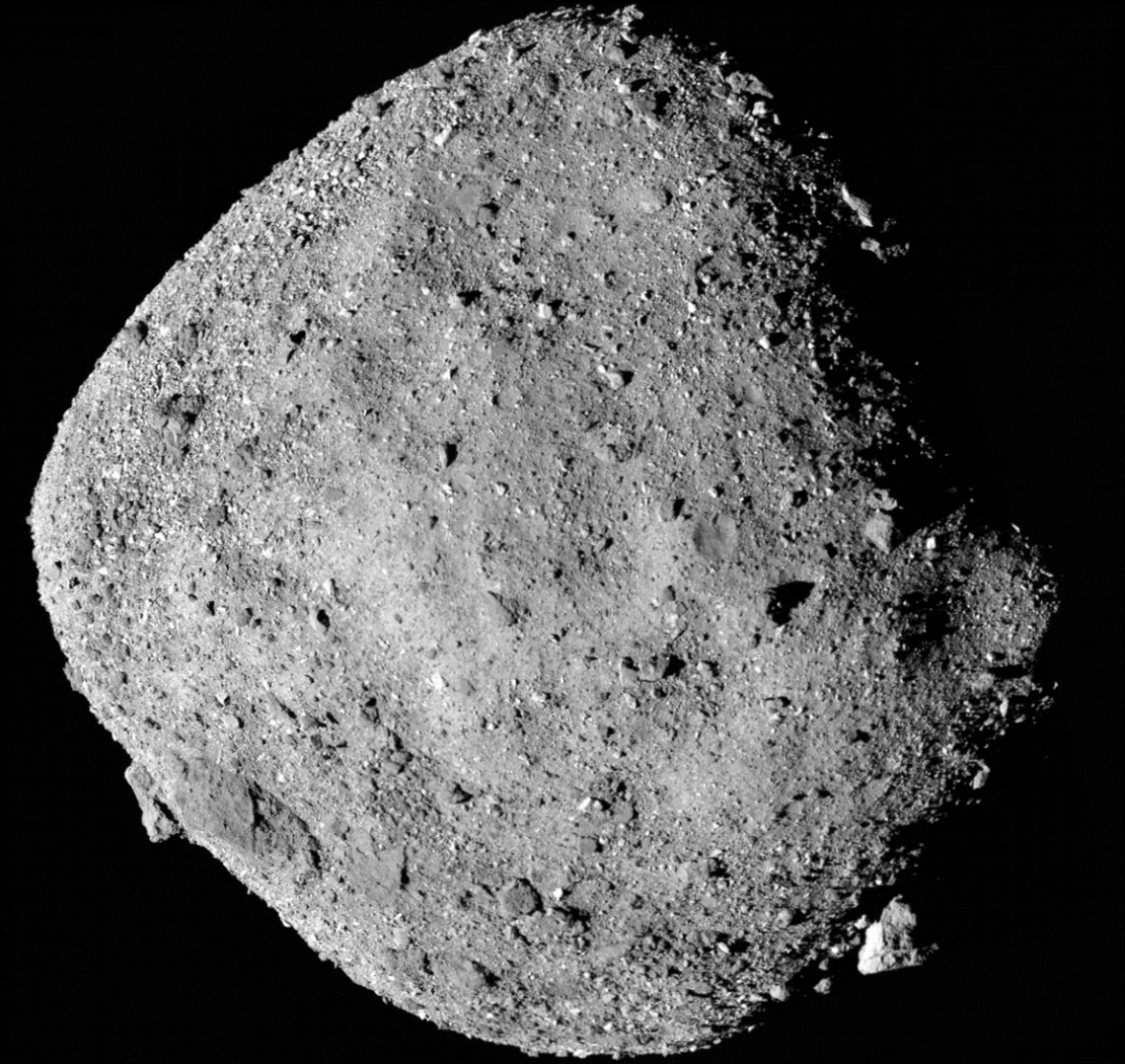Smithsonian Opens First Public Display of Asteroid Bennu Sample Collected by NASA’s OSIRIS-REx Mission

This mosaic image of asteroid Bennu is composed of 12 PolyCam images collected Dec. 2, 2018, by the OSIRIS-REx spacecraft from a range of 15 miles (24 km).
NASA/Goddard/University of Arizona
The Smithsonian’s National Museum of Natural History unveiled the first public display of a sample of Bennu—a carbon-rich, near-Earth asteroid—to museumgoers Friday, Nov. 3, 2023. The rocky fragment was collected from the asteroid by NASA’s OSIRIS-REx mission, the first U.S. space mission to sample the surface of a planetary body since Apollo 17 in 1972. Samples from Bennu may provide insights into how water and organic molecules first reached Earth, a core research focus of the OSIRIS-REx mission and of the museum’s new Our Unique Planet initiative.
“The OSIRIS-REx mission is an incredible scientific achievement that promises to shed light on what makes our planet unique,” said Kirk Johnson, the Sant Director of the National Museum of Natural History. “With the help of our partners at NASA, we are proud to put one of these momentous samples on display to the public for the first time.”
Bennu is slightly wider than the Empire State Building is tall, shaped like a spinning top and it orbits the sun at distance between the orbits of Earth and Mars. The dark rocks and dust from Bennu were collected by NASA’s OSIRIS-Rex (Origins, Spectral Interpretation, Resource Identification and Security-Regolith Explorer) spacecraft in 2020, following two years spent mapping the asteroid’s rocky exterior.
The Smithsonian is the first institution to display a Bennu sample to the public; it will be exhibited in the museum’s Janet Annenberg Hooker Hall of Geology, Gems, and Minerals meteorite gallery. In addition to the Bennu sample, museum visitors will also see scale models of the OSIRIS-Rex spacecraft, on loan from Lockheed Martin, and the Atlas V 411 rocket that carried the spacecraft, on loan courtesy of United Launch Alliance. The display will also include a video highlighting interviews, animations and images from the mission. Other samples will later go on display at the Alfie Norville Gem & Mineral Museum at the University of Arizona in Tucson and Space Center Houston, adjacent to NASA’s Johnson Space Center, where most of the Bennu samples reside.
